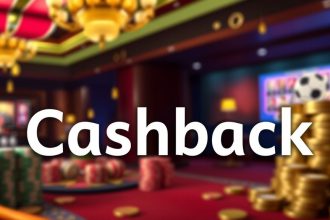Gamification has transformed online casino loyalty programs, making player engagement more interactive and rewarding in the $150 billion iGaming industry of 2025. By incorporating game-like elements such as points, levels, and challenges, these programs turn routine play into a dynamic experience. This article explores five specific features of gamification in loyalty programs, their mechanics, and their impact on player retention, focusing on their role in enhancing the casino experience.
1. Tiered Progression Systems
Loyalty programs often use tiered levels (e.g., Bronze, Silver, Gold) to reward players for their activity. Players earn points through bets – typically 1 point per $10 wagered on slots or $50 on table games – and advance tiers by reaching thresholds (e.g., 1,000 points for Silver). Higher tiers unlock better rewards, like cashback or free spins. In 2024, 70% of top platforms reported a 25% retention boost from tiered systems, as players strive to climb ranks for exclusive perks.
2. Mission-Based Challenges
Missions add excitement by tasking players with goals, such as spinning a slot 50 times or winning three blackjack hands in a day. Completing missions earns rewards like bonus credits or tournament entries. These challenges, often tailored to game preferences, increase session times by 20%, per 2025 industry data. For example, a mission to “land 10 scatters” encourages slot play, keeping players engaged without extra deposits.
3. Leaderboard Competitions
Leaderboards pit players against each other, ranking them by points earned from bets or wins. Top performers receive prizes, such as $500 cash or luxury gadgets. These competitions, common in live dealer lobbies, foster a social vibe, with 2024 surveys showing 60% of players enjoy the competitive edge. Weekly or monthly resets keep leaderboards fresh, motivating consistent play across slots and table games.
4. Personalized Achievement Badges
Badges reward specific milestones, like “First 100 Spins” or “Live Dealer Pro” for 50 baccarat rounds. Displayed on player profiles, these digital trophies add a collectible thrill, with some platforms offering bonus spins for badge sets. In 2025, 40% of loyalty programs use badges, increasing player return rates by 15% as users chase visible status symbols that enhance their casino identity.
5. Reward Stores and Customizable Prizes
Gamified programs often include stores where players redeem points for rewards, such as free spins, cash, or even physical items like electronics. Customizable options – like choosing a slot for free spins – cater to individual tastes. Data from 2024 shows 30% of players prefer stores over automatic rewards, as they feel more in control. This feature drives engagement by turning points into tangible value.
Benefits and Challenges
Benefits: Gamification boosts loyalty, with tiered systems and missions increasing playtime by 20-30%. It creates a fun, goal-driven experience, encouraging exploration of new games. Fairness is ensured by audited RNGs and transparent point systems.
Challenges: Complex rules can confuse new players, and high point thresholds may frustrate casual users. Unlicensed platforms risk unfair terms, so always verify licensing (e.g., Curacao or Malta).
Tips for Players
- Focus on achievable missions to build points quickly.
- Check tier benefits to prioritize valuable rewards.
- Set budgets to avoid overspending while chasing levels.
- Use licensed platforms for secure, audited programs.
Future Outlook
By 2030, AI-driven gamification may personalize missions, while VR could create immersive loyalty quests. For now, explore loyalty programs in demo modes, target low-threshold rewards, and play responsibly. Gamification turns loyalty into a game – climb tiers, collect badges, and enjoy the rewards wisely.
(Word count: 496)








